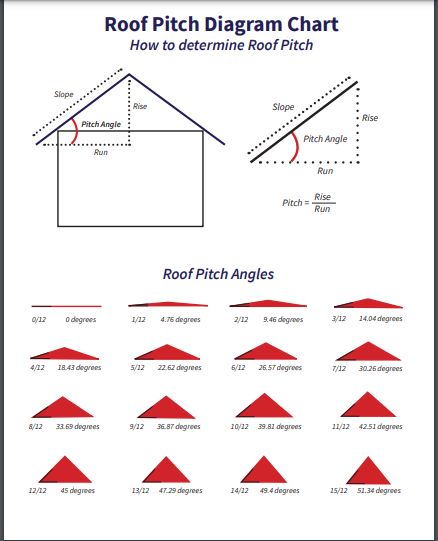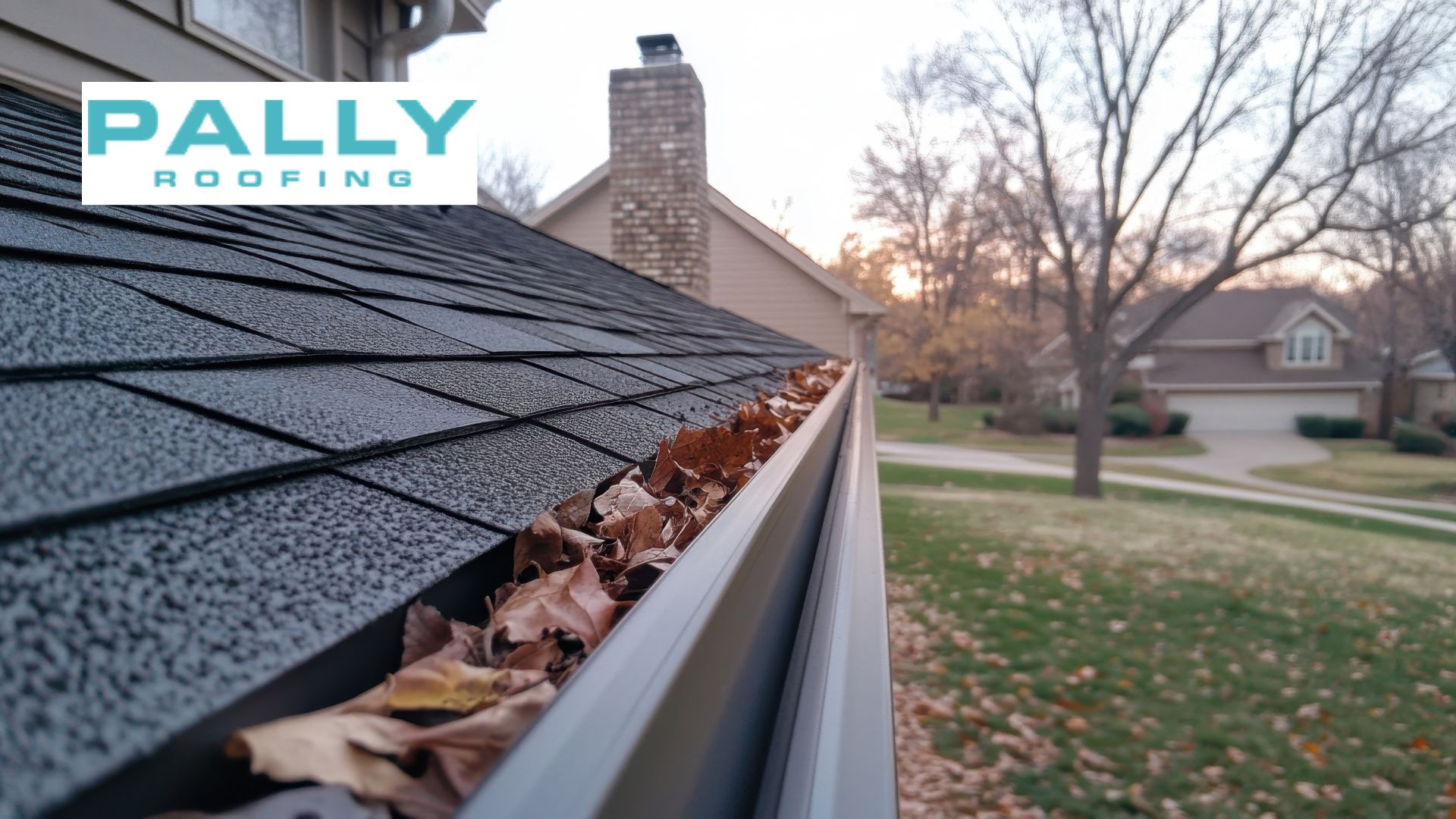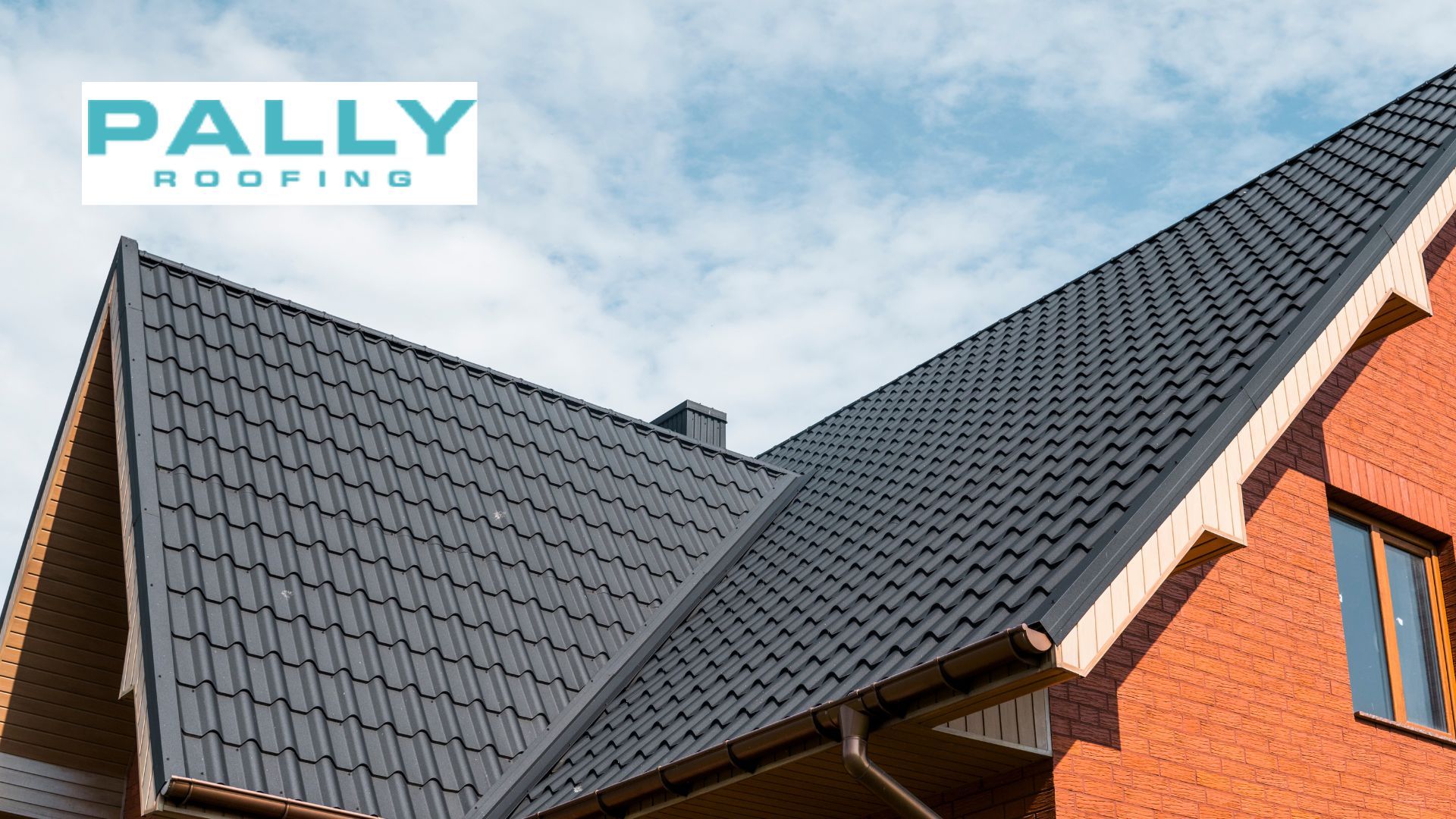Last updated on November 13th, 2024 at 05:05 am
Understanding roof pitch is important for homeowners because it affects aesthetics and functionality. A pitched roof is defined as a roof slope, typically expressed as a ratio (e.g., 4/12 roof pitch). Whether working with a 6/12 roof pitch or a 10/12 roof pitch, choosing the right pitch can impact your home’s drainage, durability, and energy efficiency. A roof pitch chart helps recognize the various pitch options. At Pally Roofing Service, we offer expert guidance to help homeowners understand roof pitch measurements and choose the best roof pitch for their homes.
Table of Contents
How Roof Pitch is Measured
Roof pitch is measured as the ratio of rise to run (e.g., a 4/12 roof pitch means a 4-inch increase for every 12 inches of horizontal run). Understanding how roof pitch works is important for ensuring proper drainage and longevity. For example, a 6/12 roof pitch angle is frequently applied on home roofs. Using a roof pitch chart or roof slope chart clarifies these measurements. Differences between low-slope vs. steep roof pitches affect how you measure and choose your roof slope. Some houses with steep roof pitches may require more specialized care to maintain.
Roof Pitch Chart: Understanding Common Slopes
Here’s a straightforward roof pitch chart showing common slope ratios (e.g., 2/12 roof pitch to 12/12 roof pitch):
Each style corresponds to different architectural styles and regional climates. For example, a 5/12 roof pitch balances aesthetics and drainage and is considered standard. Suppose you live in an environment of snow and rain. Like a 12/12 roof pitch, a steep roof pitch may be necessary to ensure proper runoff.
Why Choose Pally Roofing Service for Your Roof Pitch Needs?
- Experience and Expertise: With over 15 years in the industry, Pally Roofing has worked with various roof pitches, from 16-pitch to 14-degree pitches.
- Customized Suggestions: We analyze your property’s design, climate requirements, and aesthetic preferences to suggest the perfect roof slope angle.
- Quality and Reliability: Our team uses high-quality materials and methods, ensuring each roof is built to last while enhancing curb appeal, regardless of the roof pitch angles selected.
Pros and Cons of Different Roof Pitches for Homes
- Low-slope roofs (e.g., 2/12–4/12) are easy to clean but may require additional waterproofing. They are ideal for mild climates. Check out our roof slope chart for more details.
- Standard Slope Roofs (e.g., 4/12–8/12) are the best all-around choice, with balanced aesthetics and functionality. Great for most homes, this is the best roof pitch for home design versatility.
- Steep-slope roofs (e.g., 8/12 and above) have great drainage but can be more expensive to build and maintain. A steep roof pitch is ideal for water runoff in an area with heavy snow.
Pally Roofing Service helps clients choose the best tone based on climate, style, and budget considerations. A roof pitch chart can guide you to the best option based on regional climate and home design preferences.
Factors to Consider When Choosing a Roof Pitch
When choosing a roof pitch, consider the following:
- Climate: Steeper slopes are better in areas with heavy rainfall or snow for better runoff. For example, the best roof pitch for heavy rain and snow climates might be an 8/12 roof pitch in degrees.
- Architectural Style: Certain pitches are preferred in particular styles, and modern designs may prefer lower slopes, like a 2:12 roof slope.
- Functionality and Maintenance: Steeper roofs reduce water pooling but may require specialized maintenance. Use a roof pitch guide to determine the most practical choice.
- Pally Roofing Service provides individualized consultations to help each unique property balance these elements.
How to Use a Roof Pitch Angle Chart for Selecting Roof Slope
A roof pitch chart is a helpful tool that helps homeowners visualize various roof slopes and match slope preferences with practicality. For instance, if there is a lot of rainfall in your location, a steeper slope, like a 6/12 pitch roof angle or higher, might be ideal to encourage runoff. The chart displays common pitch ratios (e.g., 2/12 roof pitch, 12/12 roof pitch), illustrating the roof’s incline. To use the chart effectively, start by determining your climate and architectural style preferences, then match those needs with the appropriate roof slope for aesthetics and functionality.
Understanding Roof Pitch Measurements for Homeowners
In other words, a 4/12 roof pitch indicates a 4-inch increase for every 12-inch horizontal run or a ratio of vertical rise to horizontal run. By being aware of these measurements, homeowners can select the best drainage and aesthetic roof. For example, a roof slope chart can guide decisions based on these ratios, helping you select between low-slope and steep-slope roofs. Homeowners must understand roof pitch measurements to ensure their roof provides adequate protection and fits the home’s style.
Choosing the Right Roof Slope Using a Roof Pitch Diagram

Source: roofvents
Use a roof pitch chart that matches your architectural style and climate to determine the best roof slope. For example, steep slopes like an 8/12 pitch may suit areas with frequent snowfall, as they provide excellent drainage. Conversely, a 2/12 pitch works well in modern homes in arid climates. The plan offers sections that help you consider what best suits your home layout and environment. Consulting a professional with roof pitch expertise can ensure your selection aligns with your home’s design and local weather conditions.
Using a Roof Pitch Chart for Roof Replacement or New Installations
Readers can use the roof pitch chart to decide on roof pitch angles during installations or renovations. A professional roofing survey is frequently required to ensure the practicality of existing structures. Whether considering a roof pitch to the angle of 30 degrees or a roof pitch diagram for 12/12 roof pitch in degrees, we guide you through every step. You can also use a roof slope factor chart to fine-tune the measurements for your specific roof design.
Conclusion
Choosing the right roof pitch is essential for both aesthetics and functionality. We invite readers to contact Express Pally Roofing for a free consultation or roof assessment to determine the best roof pitch for home design. Whether you need guidance on a 9-pitched roof angle, a roof pitch conversion chart, or a roof pitch to the angle of 30 degrees, our experts are here to help! For more information on how to use a roof pitch chart to select a roof slope, get in touch with us today.
Frequently Asked Question
What Is The Angle Of A 10-Degree Roof Pitch?
A 10-degree roof pitch is a shallow slope often used in modern or commercial designs.
What Is The Angle Of A 60-Degree Roof Pitch?
A 60-degree roof pitch is a steep angle commonly found in alpine or specialized roofing designs.
What Is The Angle Of A 6/12 Roof Pitch?
A 6/12 roof pitch has an angle of 26.565 degrees, commonly used in residential buildings.
What Is The Angle Of A 5-Degree Roof Pitch?
A 5-degree roof pitch is very low, typically seen in flat-roofed or modern structures.
What Is The Angle Of A 14-Degree Roof Pitch?
A 14-degree roof pitch with a moderate slope is often used for residential roofs.
What Is The Angle Of A 9/12 Roof Pitch?
A 9/12 roof pitch results in an angle of 37.5 degrees, ideal for steep roofs.
What Are Roof Slopes In Degrees?
Roof slopes, measured in degrees, indicate the steepness, with angles ranging from 5 to 60 degrees.
What Is The Angle Of An 11/12 Roof Pitch?
An 11/12 roof pitch has an angle of 45.57 degrees commonly used for steep residential roofs.
What Is The Angle Of A 13/12 Roof Pitch?
A 13/12 roof pitch results in an angle of 50.19 degrees, providing a sharp, dramatic appearance.
What Is A Hip Roof Pitch Chart?
A hip roof pitch chart determines the angle of a hip roof and its corresponding slope.
What Is A Roof Pitch Table?
A roof pitch table helps calculate the slope based on the rise/run ratio.
What Is The Angle Of A 34-Degree Roof Pitch?
A 34-degree roof pitch offers a moderately steep angle, often used for a balanced architectural look.
What Is The Angle Of An 18-Pitch Roof?
An 18-pitch roof has an angle of approximately 20.71 degrees, which is ideal for low-slope roof designs.
What Are Typical Roof Pitch Degrees?
Typical roof pitch degrees range from 5 to 60 degrees, depending on the roof design and climate.
Author
-

With more than 16 years of hands-on experience, Phillip Schmucker is the knowledgeable owner of Pally Roofing. His dedication to superior roofing services has earned him a reputable place in the industry. Phillip also shares his extensive expertise through writing, providing readers with practical tips and professional advice on various roofing topics. Follow him on LinkedIn.
View all posts






